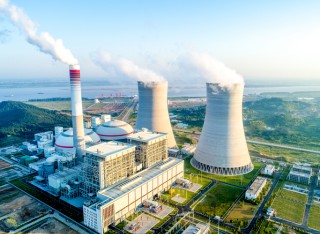
Dr Bin Zhu
Academic and research departments
Centre for Engineering Materials, School of Mechanical Engineering Sciences.About
Biography
Dr Bin Zhu is now a research fellow in Mechanical Engineering Sciences at the University of Surrey, UK. He has obtained his PhD at the University of Surrey, working at multiscale residual stress evaluation and mechanical property characterisation using both microscopy-related techniques and national large facilities. He is keen to develop the techniques for the harsh environments to meet the future test needs. He envisions enhancing material properties and longevity by managing residual stress that is induced during manufacturing.
ResearchResearch interests
- Multiscale residual stress evaluation.
- Multiscale in situ mechanical testing.
- Computation modelling for prediction of residual stress and mechanical properties.
Research interests
- Multiscale residual stress evaluation.
- Multiscale in situ mechanical testing.
- Computation modelling for prediction of residual stress and mechanical properties.
Publications
Dental caries is the most prevalent oral disease that causes structural and compositional changes of the dental hard tissues due to a chronic demineralisation (combined with possible phases of remineralisation) process. Though considerable efforts have been directed at studying natural and artificial carious lesions, most characterisations remain either constrained to 2D analyses or have been unable to achieve fine resolution in 3D due to limited field of view. To overcome this challenge, the present study combined X-ray diffraction (XRD) and scanning transmission X-ray microscopy (STXM) tomography techniques to analyse the mineral density, scattering intensity, and crystallite size in normal, carious, 30 % artificially demineralised, and 50 % artificially demineralised dentine. Combined XRD and STXM tomography was performed on the I18 beamline at Diamond Light Source, using a 15 keV monochromatic beam with 2 × 2 µm spotsize and scanning with translation steps of 2 µm, providing a reconstructed voxel size of 2 × 2 × 2 µm. Natural carious dentine showed a reduction in hydroxyapatite (HAp) crystallite size due to chronic demineralisation. This was unlike artificially demineralised dentine samples that underwent short, continuous demineralisation, which created a zone of fully demineralised dentine, near the sample surface, and a zone of partially demineralised dentine that had a reduced mineral density but an increased average crystallite size.
Residual stress poses significant risks to the life management of key engineering components in nuclear fusion reactors. It is often induced within the narrow heat-affected zone (HAZ) during remote laser welding, essential for maintaining and assembling in-vessel components. Residual stress interacts with high temperatures, degrading mechanical properties and altering fracture mechanisms. Establishing a correlative methodology with microstructures to investigate these stresses and understand their effects on mechanical properties within the narrow HAZ is crucial for extending the reactor's lifetime. In this study, advanced residual stress measurements, including plasma-focused ion beam and digital image correlation, were employed to reveal heterogeneous stress distribution, discovering the peak tensile residual stress of 150 MPa at the interface of the fusion zone (FZ) and HAZ, and peak compressive residual stress of 550 MPa within HAZ. The residual stress effects on micro-hardness are quantitatively evaluated, showing a 25% hardening effect at HAZ/BM interface and a 10% softening effects at fusion line. The deformation mechanism is further analysed using tensile testing, where the residual stress effects were prominent in the low-stress field, reducing 6.5% strain evolution, while microstructures reinforced the material in the high-stress field. At elevated temperatures, the joint exhibited a significant reduction from 532 MPa to 345 MPa for yield strength and from 12 % to 8 % for elongation, with distinct fracture mechanisms observed through fractography compared to its behaviour at room temperature. These findings provide critical insights into enhancing laser welding processing and maintaining the structural integrity of in-service nuclear fusion reactor components.
Fusion In-vessel components, assembled and maintained using laser welding, one of the most promising techniques, exhibit complex distributions of residual stress, microstructures, and material properties. These residual stresses can compromise structural integrity and lifespan of critical components. Although using advanced experimental measurements can evaluate the residual stress for individual case, extending the measurements to massive number of components are costly and time-consuming. Traditional machine learning (ML) models struggle to account for the heterogeneity and anisotropy of these stress distributions. Here, we develop a novel ML framework based on the Eurofer97 steel, the structural material for in-vessel components. The ML framework is trained on high-resolution residual stress data derived from recently-developed evaluation techniques. Combining with microstructures, the model enables prediction of heterogenous and anisotropic residual stress distribution. It successfully predicts the compressive residual stress in fusion zone (∼−200 MPa) balanced by tensile residual stress in heat affected zone (∼300 MPa), aligning closely with experimental results with the R-squared value of 0.989 and the mean square error of 10−4. Unlike experiments that take hours, the ML model provides predictions within seconds. It offers valuable insights into residual stress prediction for various joints, enhancing the reliability and lifetime prediction of in-vessel components.
Despite the elaborate varieties of iridescent colors in biological species, most of them are reflective. Here we show the rainbow-like structural colors found in the ghost catfish (Kryptopterus vitreolus), which exist only in transmission. The fish shows flickering iridescence throughout the transparent body. The iridescence originates from the collective diffraction of light after passing through the periodic band structures of the sarcomeres inside the tightly stacked myofibril sheets, and the muscle fibers thus work as transmission gratings. The length of the sarcomeres varies from ~1 μm from the body neutral plane near the skeleton to ~2 μm next to the skin, and the iridescence of a live fish mainly results from the longer sarcomeres. The length of the sarcomere changes by ~80 nm as it relaxes and contracts, and the fish shows a quickly blinking dynamic diffraction pattern as it swims. While similar diffraction colors are also observed in thin slices of muscles from non-transparent species such as the white crucian carps, a transparent skin is required indeed to have such iridescence in live species. The ghost catfish skin is of a plywood structure of collagen fibrils, which allows more than 90% of the incident light to pass directly into the muscles and the diffracted light to exit the body. Our findings could also potentially explain the iridescence in other transparent aquatic species, including the eel larvae (Leptocephalus) and the icefishes (Salangidae).
The plasma-facing components of future fusion reactors, where the Eurofer97 is the primary structural material, will be assembled by laser-welding techniques. The heterogeneous residual stress induced by welding can interact with the microstructure, resulting in a degradation of mechanical properties and a reduction in joint lifetime. Here, a Xe+ plasma focused ion beam with digital image correlation (PFIB-DIC) and nanoindentation is used to reveal the mechanistic connection between residual stress, microstructure, and microhardness. This study is the first to use the PFIB-DIC to evaluate the time-resolved multiscale residual stress at a length scale of tens of micrometers for laser-welded Eurofer97. A nonequilibrium microscale residual stress is observed, which contributes to the macroscale residual stress. The microhardness is similar for the fusion zone and heat-affected zone (HAZ), although the HAZ exhibits around ~30% tensile residual stress softening. The results provide insight into maintaining structural integrity for this critical engineering challenge.
